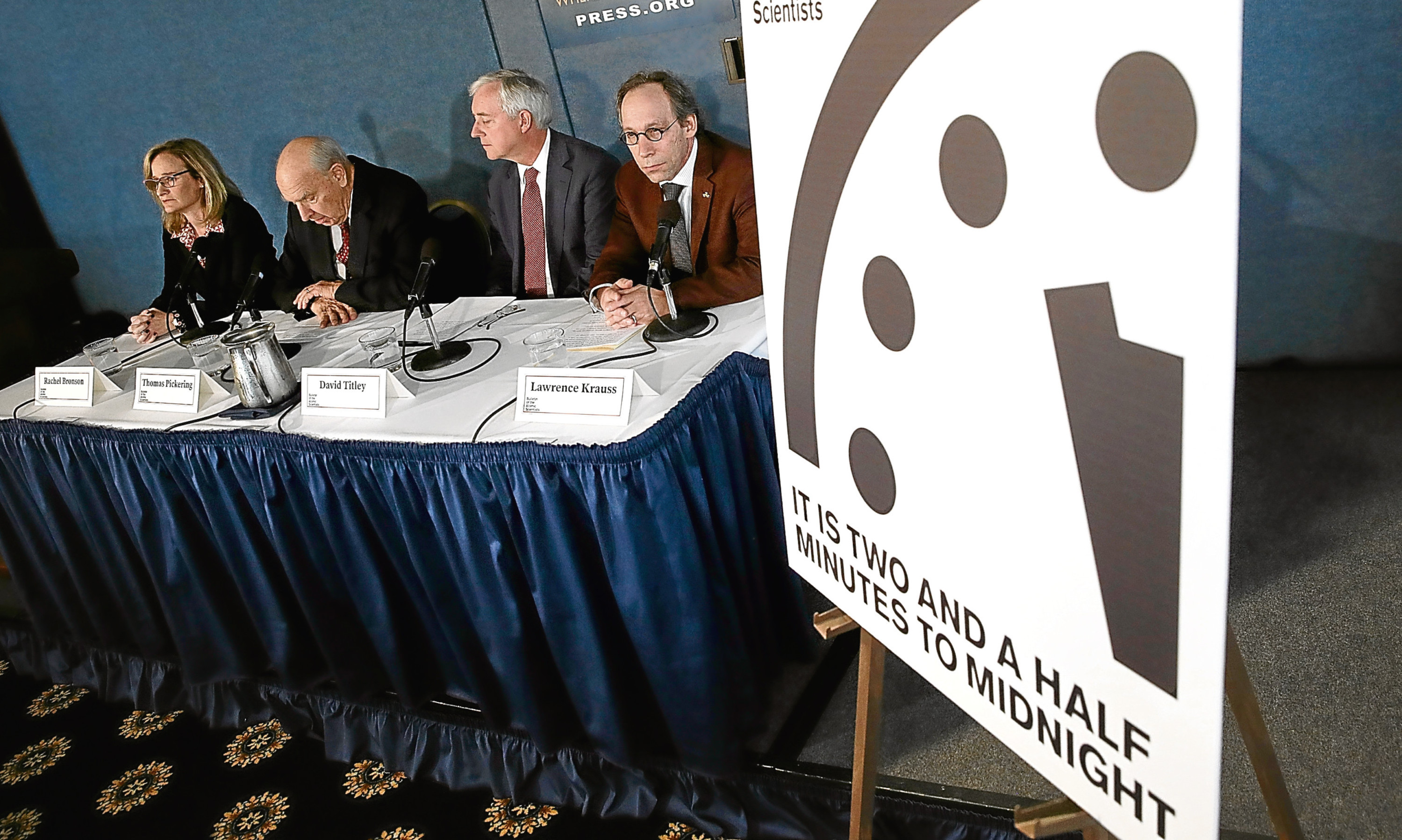In the age of Trump, everybody thinks their thing is suddenly more relevant.
In newspapers, we’re seeing it everywhere. Just as Christmas time means everybody pitches stories about Christmas, the terrifying era of a right-wing maverick US president has writers drawing parallels with all sorts of stuff – mainly dystopian science fiction.
Some of the most common references involve The Running Man, in which a media-obsessed despotic regime puts criminals through a deadly game show – and this one is largely because the fictional date happened to coincide with the start of the Trump era.
And don’t even get me started on the countless comparisons with Nazi Germany.
I was guilty of it, too, writing a column here that linked the Declaration of Arbroath’s big anniversary with the threat to fundamental freedoms in the United States. As The Donald might say, sue me.
But this trend really hit home last week, when the Bulletin of Atomic Scientists moved the hands of the Doomsday Clock closer to midnight and I thought of Watchmen.
The clock, for those who may not know, is an effective metaphor for the proximity of nuclear war.
Trump’s statements and a general intensification of international tensions meant its keepers moved that imaginary minute hand nearer to the top, which is the point the ba’ is on the slates for the human race – boom.
In Watchmen, the influential graphic novel by Alan Moore and Dave Gibbons, the clock face is a recurring image, sometimes subtly, throughout its 12 chapters, maintaining tension in a tale of the impending apocalypse.
It’s no longer just fiction. Many of its aspects – like a superpowered sociopath taking a trip to Mars – aren’t likely but the tension and danger are certainly here.
Crowds in the streets are howling about the regime. Nobody seems to know what to do. Who will save us?
And in a classical reference that sums up the book’s theme of power-gone-awry, who watches the watchmen? Well, we do. All of us: journalists, activists, the general public and, joyfully, even US government employees. We watch, call him out, deal with it and hope for better times ahead.
